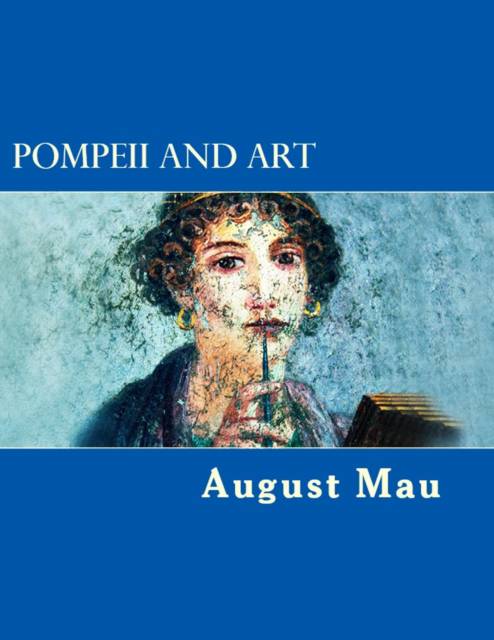
- Afhalen na 1 uur in een winkel met voorraad
- Gratis thuislevering in België vanaf € 30
- Ruim aanbod met 7 miljoen producten
- Afhalen na 1 uur in een winkel met voorraad
- Gratis thuislevering in België vanaf € 30
- Ruim aanbod met 7 miljoen producten
Zoeken
€ 46,95
+ 93 punten
Omschrijving
For twenty-five years Professor Mau has devoted himself to the study of Pompeii, spending his summers among the ruins and his winters in Rome, working up the new material. He holds a unique place among the scholars who have given attention to Pompeian antiquities, and his contributions to the literature of the subject have been numerous in both German and Italian. The present volume, however, is not a translation of one previously issued, but a new work first published in English, the liberality of the publishers having made it possible to secure assistance for the preparation of certain restorations and other drawings which Professor Mau desired to have made as illustrating his interpretation of the ruins.In one respect there is an essential difference between the remains of Pompeii and those of the large and famous cities of antiquity, as Rome or Athens, -which have associated with them the familiar names of historical characters. Mars' Hill is clothed 'vith human interest, if for no other reason, because of its relation to the work of the Apostle Paul; while the Roman Forum and the Palatine, barren as they seem to-day, teem with life as there rise before the mind's eye the scenes presented in the pages of classical writers. But the Campanian city pia yed an unimportant part in contemporary history; the name of not a single great Porn peian is recorded. The ruins, deprived of the interest arising from historical associations, must be interpreted with little help from literary sources, and repeopled with aggregate rather than individual life.It was at first proposed to place at the end of the book a series of bibliographical notes on the different chapters, giving references to the more important treatises and articles dealing with the matters presented. But on fuller consideration it seemed unnecessary thus to add to the bulk of the volume; those who are interested in the study of a particular building or aspect of Pompeian culture will naturally turn to the Pompeianarum antiquitatum historia, the reports in the Notizie delgi Scavi, the reports and articles by Professor Mau in the Roman Mittheilutgen of the German Archaeological Institute, the Overbeck-Mau Pompeji, the Studies by Mau and by Nissen, H. Von Rohden's Terracotten von Pompeji, and the older illustrated works, as well as the beautiful volume, Pompeji 'l'Or der Zerstoerung, published in I897 by Weichardt.The titles of more than five hundred books and pamphlets relating to Pompeii are given in Furchheim's Bibliograjia di Pompei (second edition, Naples, 1891). To this list should be added an elaborate work on the temple of Isis, Aedis Isidis Pompeiana, which is soon to appear. The copperplates for the engravings were prepared at the expense of the old Accademia ercolanese, but only the first section of the work was published; the plates, fortunately, have been preserved without injury, and the publication has at last been undertaken by Professor Sogliano.Professor Mau wishes to make grateful acknowledgment of obligation to Messrs. C. Bazzani, R. Koldewey, G. Randanini, and G. Tognetti for kind assistance in making ready for the engraver the drawings presenting restorations of buildings; to the authorities of the German Archaeological Institute for freely granting the use of a number of drawings in its collection; and to the photographer, Giacomo Brogi of Florence, for placing his collection of photographs at the author's disposal and making special prints for the use of the engraver. In addition to the photographs obtained from Brogi, a small number were furnished for the volume by the translator, and a few were derived from otqer sources. The restorations, are not fanciful. They were made with the help of careful measurements and of computations based upon the existing remains; occasionally also evidence derived from reliefs and wall paintings was utilized. Uncertain details are generally omitted.
Specificaties
Betrokkenen
- Auteur(s):
- Vertaler(s):
- Uitgeverij:
Inhoud
- Aantal bladzijden:
- 566
- Taal:
- Engels
Eigenschappen
- Productcode (EAN):
- 9781508901549
- Verschijningsdatum:
- 16/03/2015
- Uitvoering:
- Paperback
- Formaat:
- Trade paperback (VS)
- Afmetingen:
- 216 mm x 279 mm
- Gewicht:
- 1296 g

Alleen bij Standaard Boekhandel
+ 93 punten op je klantenkaart van Standaard Boekhandel
Beoordelingen
We publiceren alleen reviews die voldoen aan de voorwaarden voor reviews. Bekijk onze voorwaarden voor reviews.











